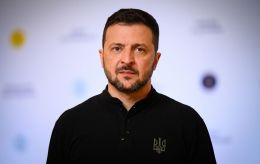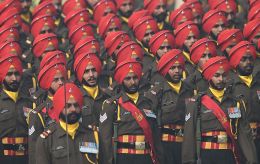Why it is important for Ukraine to maintain buffer zone on Russian territory: Expert explanation
 Photo: Expert explained why it is important for Ukraine to maintain a buffer zone on Russian territory (Getty Images)
Photo: Expert explained why it is important for Ukraine to maintain a buffer zone on Russian territory (Getty Images)
It is important for Ukraine to maintain a buffer zone in the Kursk and Belgorod regions, particularly because Russia is redeploying some of its forces from the frontlines in Ukrainian territory to these areas, states military expert, reserve major of the Armed Forces of Ukraine, Oleksii Hetman, in a comment to the RBC-Ukraine YouTube channel.
"Why do we need these operations, and how deep can we advance? Not very deep. I don't think we're talking about hundreds of kilometers. I think it should be tens of kilometers, well, at least up to a hundred, let's say. That's what I'd like," said Hetman.
According to him, the Armed Forces of Ukraine are creating a buffer zone so that at least some artillery shells do not reach Ukrainian territory. This is particularly relevant for large cities like Kharkiv and Sumy.
"Yes, there is a political aspect. Should we do this or not? It's worth doing. But it must be done in a way that we incur minimal losses. And commanders, who organize these combat operations, must be highly skilled. Then, we need to secure the area and hold the defense deep within Russian territory, while maintaining the buffer zone," the expert noted.
He also explained why this is important from a military standpoint and why it might not be better to use these troops for other fronts.
"This is kind of a provocative question. Because there are about 600,000 Russian military personnel involved in the Russian-Ukrainian war. They lose an average of 1,250 per day, but they can recruit about 30-35 thousand every month through recruitment and other means. The number of their troops is practically becoming smaller, but not significantly," Hetman said.
He noted that when the Russian troops respond and engage in combat with Ukrainian defenders in the Kursk or Belgorod regions, these are the same Russian forces from the 600,000.
"Here's the key point. So, these are not troops moving from Siberia or the Far East. The 600,000 are fighting in the Russian-Ukrainian war on our territory, and there are about 80,000 in the Kursk region. There will be approximately the same number in Belgorod if the situation there develops," the expert added.
So, according to him, 100,000–150,000 soldiers are fighting on Russian territory, having been redeployed from the 600,000.
"Which means, there are not 600,000 left on our territory, but 500,000. So, the simple question is, wouldn’t it be more beneficial if, of the 600,000 fighting against us, 150,000 were fighting on Russian territory, and the remaining 300,000 or even all 600,000 were fighting on Russian territory, so the war would be there? This is what we have said many times: move the war to the enemy’s territory," Hetman emphasized.
Situation in the Kursk region
In August 2024, the Ukrainian Defense Forces crossed the state border in the Sumy region and began taking control of settlements in the Kursk region of the Russian Federation. The operation was a sort of raid aimed at drawing enemy forces away from the east and south, as well as preventing a breakthrough into the Sumy region.
Over more than six months, the enemy pushed the Ukrainian Armed Forces out of most settlements in the Kursk region. In early March, the aggressor attempted to cut off the road between Sudzha and Sumy, thereby trying to encircle our troops operationally.
The Russian forces reported the encirclement of Ukrainian units in the region, but the General Staff denied this information.
Meanwhile, the US Institute for the Study of War (ISW) claimed that the Ukrainian Armed Forces had lost control of the city of Sudzha.
For more details on the situation in the Kursk region, read the RBC-Ukraine material.

